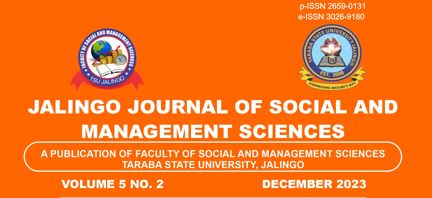Implications of Population Sizes on Per Capita of Landuse Land Cover in Yobe State, Nigeria
Keywords:
Economic activities, landuse landcover, per capita, physical resources, population size, resource depletionAbstract
Population size is the major demographic factor that affects landuse land cover. Socio-economic activities like arable farming, wood harvesting, construction of roads and shelters change the land cover at the detriment of the natural resources. The study was embarked upon to identity the effects of increase in population on per capita of landuse and land cover. The data used are areal cover, population sizes of 1990 and 2020, and types of landuse land cover and magnitude of each. The landuse land cover types and magnitude of each was generated from landsat imageries of 1990 and 2020 using varied GIS and remote sensing techniques. Data on population sizes and landuse land cover were analyzed by dividing the magnitude of the area covered by the population sizes of the corresponding year. The results indicate population and density increased by 16.04% 46 persons per km2 while the land per capita decreased by 16,225.75m2. The effects of decrease in land per person on the environment cause reduction in surface resources like vegetation cover and fertile soils. To the inhabitants, the decrease caused reduction in economic activities like arable farming. The result of the finding indicates that increase in population of Yobe State by 16.04% between 1990 and 2020 leads to decrease in land per capita from 6.19% to 2.63%. The increase in population and density, and decrease in land per capita suggest sustainable use of the limited land resource like vegetation cover, surface water and fertile soil by the populace. The study recommends the state government should educate the populace on the implication of large family size on the environment, quality of life of the household, and the need for conserving the environment. Likewise, farmers should adopt environmentally friendly arable farming like mixed cropping and to conserve the vegetation cover.

Downloads
Published
Issue
Section
License
Copyright (c) 2023 JALINGO JOURNAL OF SOCIAL AND MANAGEMENT SCIENCES

This work is licensed under a Creative Commons Attribution-NonCommercial 4.0 International License.
